Japanese Bridge
The Japanese Covered Bridge or Cau Chua Pagoda (in Vietnamese “Cau Nhat Ban”) is one of the most famous tourist attractions in Hoi An, Vietnam. The original Vietnamese name of this bridge is “Lai Vien Kieu”. It is considered that the Japanese Covered Bridge belongs to the Japanese community in Hoi An, and was built in the early seventeenth century. No trip to Hoi An would be completely without visiting Japanese Covered bridge.
The Japanese Covered Bridge in Hoi An is a beautiful example of the Japanese architecture of the period. Connecting Tran Phu St with Nguyen Thi Minh Khai St, the Japanese Covered bridge was constructed in the 1590s by the Japanese community of Hoi An, in order to create a link with the Chinese quarters across the stream. Over the centuries the ornamentation of the bridge has remained relatively faithful to the original Japanese design. Its simplicity contrasts greatly with the Vietnamese and Chinese penchant for wild decoration. The French flattened out the roadway to make it more suitable for their motor vehicles, but the original arched shape was restored during major renovation work carried out in 1986.
Description:
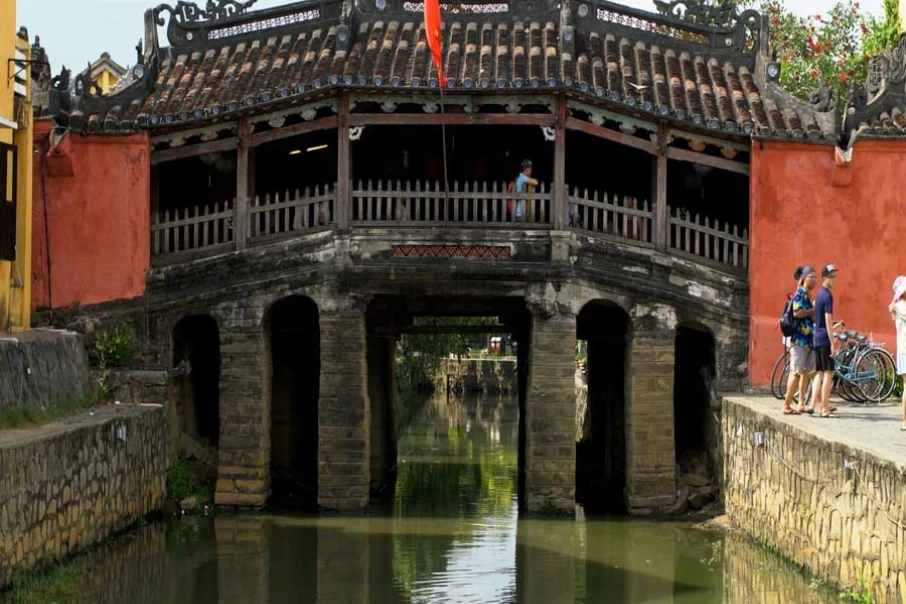
The bridge was constructed with a roof so that it could be used as a shelter from both rain and sun. To name the bridge, Nguyen Phuc Chu Lord, in his trip to Hoi An in 1719, carved prominently 3 Chinese characters above the door: “Lai Vien Kieu” ( = “Bridge for passengers by from Afar”). At one end of the bridge, there are 2 sculptures – of a dog and of a monkey. These two animals are symbols of sacredness in Japanese culture. Another reason behind these animal sculptures is that according to the Asian zodiac signs, in the year of the monkey and the year of the dog many of the Japanese Emperors were born. Records also say that the construction of the bridge was initiated in the dog year and was finished in the monkey year
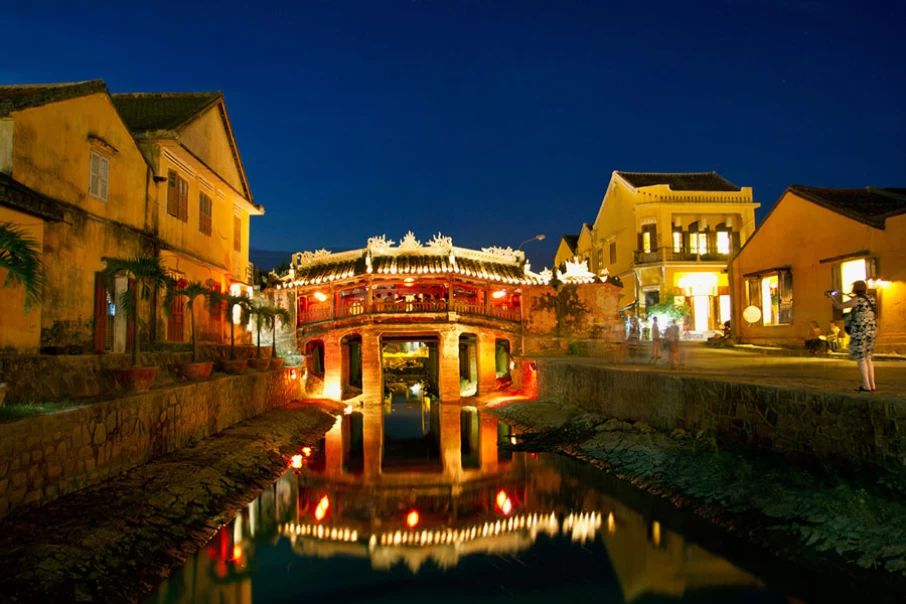
Inside the Japanese Covered Bridge lies a temple of the northern God Tran Vo Bac De. This God is considered the God of Weather. People believe that He controls all kinds of weather changes and natural calamities, so the sailors both worship and fear Him.
One theory of the bridge’s religious purpose is that it was built to subdue a world-spanning ‘mamazu’ dragon monster, whose head was located in India and its tail in Japan. The movement of the tail was believed to cause earthquakes in Japan. As Vietnam was located in the area of mamazu’s back, the bridge was intended to pin the mamazu down, thus preventing any earthquakes.
The Japanese Covered Bridge is an invaluable property and has officially been established as the symbol of Hoi An.
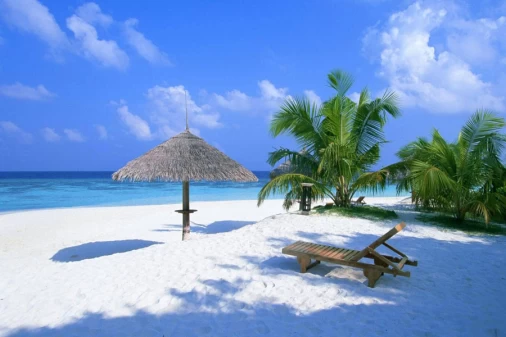
An Bang Beach
An Bang Beach, located in the city of Hoi An in Vietnam has been voted amongst the top 50 beautiful...
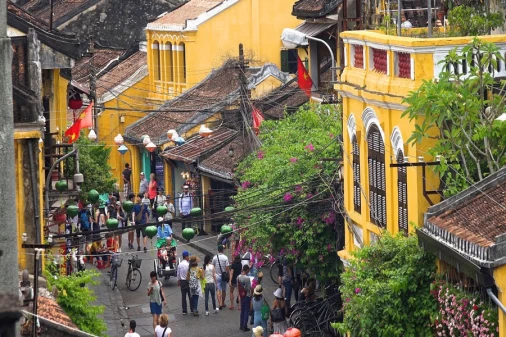
Central Market Hoi An
Description: Sharpen your bargaining skills and head south east to Hoi An Central Market, one of Vietnam’s...
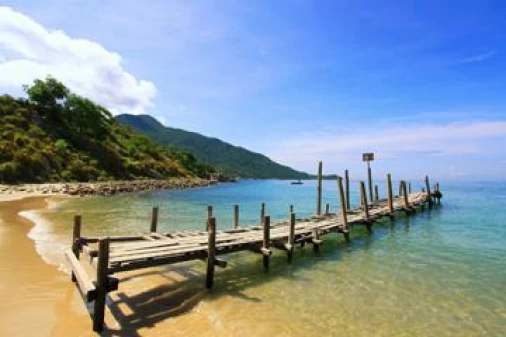
Cham Island
Cham Islands consists of eight small islands off the coast of Hoi An, one of which is a recognized UNESCO...
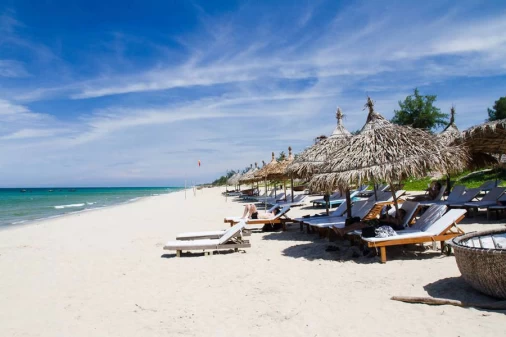
Cua Dai Beach
Cua Dai Hue Beach is always in the top of Asia’s most beautiful beaches. Here there are small waves,...
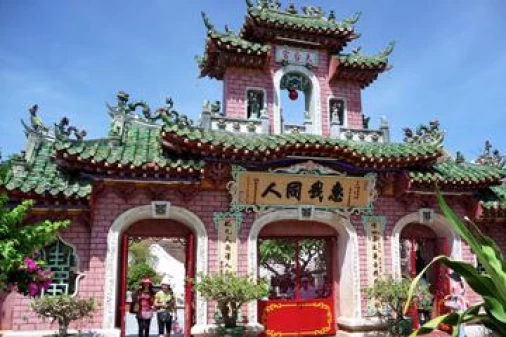
Fujian Assembly Hall
Fujian (Phuc Kien) Assembly Hall was built around 1690 and functions as a traditional assembly hall...
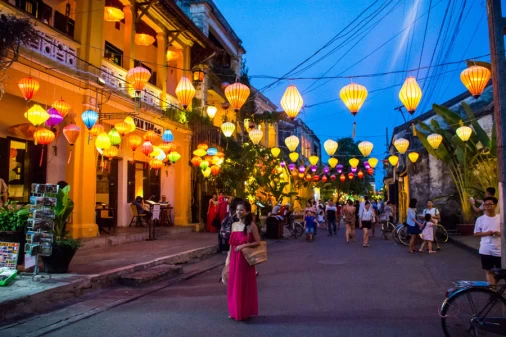
Hoi An Ancient Town
Hoi An, once a major Southeast Asian trading post in the 16th and 17th centuries, is basically a living...
You may also like
Glimpse Of Central Vietnam 5 Days
- Depart Time:Daily
- Starts/Ends:Da Nang/Da Nang
- Tour type:Private Tours
- Travel Style:Heritage Tours, Family Tours, Culture & History
- Activities:Walking tours, Sightseeing Tours, Cultural, religious and historic sites tours, City sightseeing tours
- Suitable for:Solo, Family, Group, Couple
- Age range:1 To 90 Years
- Operated in:English, French, Spanish, German, Italian
Must See Of Central Vietnam 6 Days
- Depart Time:Daily
- Starts/Ends:Da Nang/Da Nang
- Tour type:Private Tours
- Travel Style:Heritage Tours, Family Tours, Culture & History
- Activities:Walking tours, Sightseeing Tours, Cultural, religious and historic sites tours
- Suitable for:Solo, Family, Group, Couple
- Age range:1 To 90 Years
- Operated in:English, French, Spanish, German, Italian
Highlights Of Central Vietnam 7 Days
- Depart Time:Daily
- Starts/Ends:Da Nang/Da Nang
- Tour type:Private Tours
- Travel Style:Heritage Tours, Family Tours, Culture & History
- Activities:Walking tours, Sightseeing Tours, Local culture tours, Cultural, religious and historic sites tours, Countryside and village visits tours
- Suitable for:Solo, Family, Group, Couple
- Age range:1 To 90 Years
- Operated in:English, French, Spanish, German, Italian
 France
France  Spain
Spain  German
German  Italian
Italian 




 Vietnam Tours
Vietnam Tours  Cambodia Tours
Cambodia Tours  Myanmar tours
Myanmar tours  Thailand Tours
Thailand Tours  Laos Tours
Laos Tours